It is the 70th-year of Queen Elizabeth II's reign. Two months ago, the world focused on the United Kingdom's celebrations for Her Majesty's Platinum Jubilee. It was another milestone for the highly-accomplished Queen because such longevity never happened in the UK's history. Last year, Lewis and I went to the UK's capital for our first time, which is the capital of England. We were enthralled with London, so we returned. Incidentally, we departed from New York, which was a Crown Colony in the 1700s, but it rejected Britain... and it's still doing worse.
Unlike us, most Americans celebrated the reinstatement of post-COVID travel by ignoring actual places in the world and merely going to (returning to) artificial replicas within America: Las Vegas and Disney resorts. Please watch this short video...
In contrast, we believe in actually venturing to real places, and we share our stories on this blog to enliven you to do the same. Here is an apropos quote by America's beloved author:
Ironically, Lewis and I travelled from a place that was named for an English queen (NYC's Queens County) to a place whose Head of State is an English queen.
Once again, Lewis and I made a transatlantic crossing aboard British Airways. Each round-trip cost was only $700 for 3,500 miles. (Using an American airline, my coworker flew 509 miles from New York to North Carolina, and the cost was disgustingly at $400).
With a higher caliber of service than we received on Emirates Airline (in February), we remain smitten with British Airways. Per usual, the cheery flight attendants served us two mini bottles of wine before dinner and another bottle with dinner. That is comfort and generosity in the sky. Dinner was aromatically mouth-watering, and the movie selection was refreshed with many choices that appealed to us.
Our six-hour flight ended at Heathrow Airport, which is wonderful to use. Compared to JFK Airport in NYC (seen below with low ceilings, a lack of electric outlets, a crappy food court, outdated infrastructure from 1980, and merely a new facade to hide its misery)...
... Heathrow Airport was dreamy for us to use!
It was truly designed to make the passenger's life easier and comfortable. Entering the border of the United Kingdom of Great Britain and Northern Ireland was a smooth process, and the staff was immensely friendly.
The airport was easy to navigate, all of the escalators worked, the elevators were routinely disinfected, and the busy floors were kept spotless. Similar to what we saw in Finland, its clean-smelling lavatories are like being in a spa... which is vastly superior to anything in New York State.
Whereas travelers coming to New York City are beleaguered to trek across each terminal and then between them, Heathrow has a free underground tram that carries people around all of its terminals. The electric trams were prompt and tidy, and glass doors exist along the platforms to keep things off the tracks. Since much of Europe uses 24 hours to tell time (e.g.: 4pm is 16:00), it was helpful to see analog clocks at airports and transit stations. (JFK doesn't have any clocks at its gates).
Also unseen in NYC, the airport is directly connected to cities by rail. Any truly world-class city has express trains from its airport. Again, we opted for the fastest route via Heathrow Express: a sleek, immaculate train. We saved money by pre-purchasing our tickets online: £10.50 for each trip, instead of £25. It's a lovely way to be welcomed to the British Isles!
Passengers can also purchase tickets from machines and employees who are conveniently positioned with portable credit card readers and handheld printers.
Seen below, American commuter trains leave their doors open—letting dust, noise, and unpleasant temperatures get in.
UK trains automatically shut their doors, to preserve passenger comfort; latecomers can press buttons to reopen them.
Crossing train cars in America is a grimy experience using unsightly, dimly-lit, dilapidated connections.
Much better than that, UK trains are interconnected and have handsome vestibules between the coaches.
Motion-sensor glass doors keep air-conditioning inside and keep noise out.
Used as a commuter train, it is equipped with a lavatory (seen above). In the photo below, look at an American commuter train. Where are the electric outlets? It's 2022, and they still (uncaringly) don't have any.
Like most Asian and European trains, the Heathrow Express considered it a priority to let customers charge their devices—even for a mere 15-minute journey. As seen below, that's considerate and effective Customer Service.
That is why the railroad continues to achieve a 94% customer satisfaction score. (It's also impressive that it issues surveys).
With the smoothness of a jet, it glided out of the subterranean station and skimmed over the tracks to London. (As another option, the London Underground costs less but requires 45 minutes). Being environmentally-friendly, the fully-electric trains offer riders a 54% reduction in carbon emissions, as compared to diesel engines (which is what most of the USA has throughout its vast distances).
Another joy about arriving from Heathrow Airport is that the trains deposit you within the ornate Paddington Station.
This year, the Queen debuted an adorable video with Paddington Bear—a beloved British storybook character. It finally solved the mystery of what Her Majesty keeps in her always-present handbag: a marmalade sandwich! Ha ha!
According to the first book in 1958, the orphaned (talking) bear was named for the station where he was found. Around the world, viewers adored their video. Just as London's King's Cross Station boasts its connection to the literary/film character of Harry Potter, that station proudly identifies with the bear. Yet, it's done with dignity and isn't over-commercialized.
The handsome station has another famous "connection" to the Queen that will outlast her reign. Acting like many other first-word metropolises (except New York City), London dug tunnels and constructed a new subway line! Despite the global pandemic, its crews worked on that new section of the Underground. The Crossrail route was named after the Queen. Opened this year by Her Majesty, the Elizabeth Line uses brand-new tunnels, stations, and trains. Helpfully, it also connects to Heathrow Airport. Conveniently, one of its hubs is at Paddington. The whole route is a marvel of engineering and futuristic style.
[Regarding the Metro, London named it The Underground, and Londoners nicknamed it The Tube].
*To learn about NYC's infamous subway, please use these links...
https://halfwindsorfullthrottle.blogspot.com/2021/02/another-sign-of-stupidity-in-this-city.html
https://halfwindsorfullthrottle.blogspot.com/2015/09/upper-east-side-subway.html
Paddington is in London's most-famous borough: the City of Westminster. Settled by the Romans in the 670s as Lundenwic (London Port), it was near their main city, Londinium (City of London), which was settled in 47 AD. After the Norman Conquest of 1066, King Edward the Confessor constructed the first Westminster Abbey, and he put his palace near it. Since then, the English government remains in that area. As the population grew, the generalized term of "London" was used to describe the area. Westminster became its own city in 1540, and it was absorbed into the administrative region of London in 1965. It is one of 32 boroughs.
I never refer to London as a city because it isn't; it's an administrative region. Brits refer to it as "the capital". It encompasses two cities: the City of Westminster and the City of London. (The City of London is the most-ancient community; it is independent of London and retains its own governing system). The Mayor of London is Sadiq Khan. He was born in South London and has Pakistani heritage.
*To learn about London's origin—and its transit systems, please use this link (from our first time in London): https://halfwindsorfullthrottle.blogspot.com/2021/10/our-trip-to-london-uk-part-1-which.html
The only rainfall during our trip occurred as we arrived. It was a light rain that only lasted for three hours. Our hotel was merely several blocks away, but we opted to hail a taxi. Smartly, the station has an enclosed taxi courtyard. It also alleviates traffic congestion (and therefore noise pollution) in the neighborhood around the station!
It was 10 o'clock in the morning, and there was no queue for taxicabs—which was great. Lewis and I love using London's famous Black Cabs; they are the best taxis in the world! They offer the most legroom, highest ceilings, most interior space, largest windows and doorways, and friendliest/honest drivers. They are streamlined, fuel-efficient, and are equipped with auto-unfolding steps and extendable wheelchair ramps. That is what an upstanding society has.
Does that seem unbelievably modern and luxurious to you? We think so, and we admire the culture that makes it accessible for everyday use. Able to turn around in only 8-feet of space, the Black Cabs' turning radius is unsurpassed... and handy for London's ancient streets. Whereas American cabbies yell over their shoulders at their passengers, London cab drivers politely use intercoms. Black Cabs provide passenger-controls for air-conditioning, fan speed, intercom, windows, and lamps. Unlike the ride-share that we used to get to JFK Airport, the London driver didn't blast his own stereo music. Unlike American taxis, Black Cabs don't have video screens with annoyingly repetitive commercials. Those small details were appreciated! It made our ride extra comfortable.
This is what America's overpriced knee-bumping taxicabs are allowed to look like (for twice the price)...
*To learn more about streamlined cars, please use this link:
https://halfwindsorfullthrottle.blogspot.com/2017/03/streamlined.html
We notice that London cabbies are congenially chatty—if you respond to them. If you remain quiet, they do, too. We enjoy chatting with locals, so we had fun during each ride. Often, the drivers provided us with shortcuts that saved us money and made their fares lower. That is the opposite of American drivers. The UK has a non-tipping culture; those professionals provide great service because it's the correct thing to do.
Our taxi halted outside a pretty white building: the Best Western Morningside Hotel.
The 4-star hotel is situated on a street named Lancaster Gate.
The whole area is named The Lancasters. (It reminded us of our time in Amsterdam, where we stayed at a hotel named The Lancaster). The area is situated near Lancaster Gate (named for Queen Victoria as the Duke of Lancaster), which is an entrance to a royal park. Further along the road, Victoria Gate is an entrance to the adjacent royal park. Since 1351, every British monarch is concurrently the Duke of Lancaster, and that duchy provides their income. (Interestingly, in Lancashire, Lancaster Castle is owned by the Crown and used by the Crown Court for high-security trials and by Her Majesty’s Prison Service to incarcerate criminals). Last year, we strolled through part of the duchy that exists in London, near the River Thames.
Lewis and I chose that hotel via Booking.com: our trustworthy go-to website for travel. In fact, that raised Lewis' status to "Genius Level", which entitled us to new perks for our next trip.
The hotel is cozily well-appointed: fitness room, breakfast room, gas fireplace in the lobby, 24-hour Front Desk, attentive housekeeping, a library that adjoined a 24-hour bar (with hot beverage service), and a cozily-sized elevator (due to the historic structure). It is a fashionable address to stay at, and it merely cost us £158 per night.
The hotel has a high-ranking location in central London: it is an 8-minute walk to Paddington Station, three streets from a transit station, and merely one street north from Kensington Gardens! It was a privilege to stay affordably at a hotel within proximity to the 265-acre royal park. Such a thing cannot be done in Manhattan near its Central Park.
Content with our surroundings, we decided on our first activity. I suggested going to Chinatown for a Chinese-style breakfast. That's a treat that we can't easily do in NYC because transportation takes so long and is disjointed and often delayed. It usually necessitates an hour of subway use, and then 10 minutes of walking—to get across 6 miles. However, it's so easy to move around London that it only required 15 minutes of subway use and 2 minutes of walking to cross 2.5 miles! It helps that London's transit system is smartly interconnected with concentric routes, like ripples in a pond! This is a map...
We say this wherever we go, but this next map shows NYC's pathetic subway system. It's merely a feeder to bring workers from its five boroughs; nothing is interconnected.
In London, it's easy to identify Underground stations because of their iconic red logo, which is illuminated and positioned high for everyone to see. More cities should do that.
Brainwashed from their "car culture", Americans may want to drive themselves everywhere... but cars are not needed. It is better to use the marvelous public transit and your own two feet.
The first thing that we did was upload funds onto our Oyster Cards (transit cards), which we kept from last year. They never expire and always retain unused funds. You can add money to them at numerous shops around London, which is amazingly modern and convenient... instead of only having to use metro stations. Riders "tap in" and "tap out" when passing through gates at train and Metro stations.
Serving the Greater London area, the rapid-transit system is named the London Underground. Collectively, its 11 routes (lines) carry 5 million riders per day via 250 miles of track and 272 stations. (NYC's MTA handles 4.8 million daily riders on 10 routes via 248 miles of track and 360 separate stations). It is managed by a governmental agency named Transport for London.
{Ironically, its Commissioner is Andy Byford, an Englishman who was lured to NYC in January 2018. Faced with the world's most-immense corruption, infrastructure neglect, and larceny, he prepared a resignation in October 2019. Trying to support his efforts, The New York Times published a whistleblower article—compiled from thousands of subway riders—that revealed decades of the NYC MTA's mismanagement and an uncaring refusal to invest in the future. Typical of NYC's greedy/cheap history, neither incident prompted any changes}.
Not quite remembering how to add value to our Oyster Cards, we were happy to see two transit employees stationed there to assist people. Unlike NYC's overpaid and lazy Metropolitan Transit Authority workers, they immediately assisted us. We purchased enough value for seven days of Unlimited Travel within Zones 1 and 2 of London's 9 zones; those two zones encompass everything that a visitor might want to go to.
For people who dwell in NYC and endure its daily failures of public transportation, it was exhilarating to see a functioning elevator (two of them) inside that Underground station, as well as clean floors and walls! Throughout our time in London, we appreciated every functioning escalator. That's how cities should be.
Smartly, corridors have divider-railings to maintain an orderly flow between passengers who are coming and going. It's a brilliant concept (that isn't used in Manhattan).
Lewis and I liked the helpful signs that told us all of the stations that could be reached by trains on each track.
On the topic of tracks, London's are extremely well-maintained.
Meanwhile, in America's wealthiest city, the NYC MTA allows its tracks to remain filthy and contain water and litter.
In London's Underground, there are illuminated signs that helpfully direct people to the exits, and others tell riders which corridors/stairs to use to connect to other routes within the system. Easy-to-read clocks are installed along the platforms of every station. Unreasonably, NYC doesn't have those simple things in its subway stations.
Timeliness was also a treasured thing for us! During our visits to 11 countries, their subways operate on-time, whereas America's richest city has the most-delayed subway. It seemed miraculous to us that the Underground operated as intended during every day... because NYC's corrupt system has delays, reroutes, the bypassing of stations (due to lateness or "construction"), and closures every week of the year (throughout the past 14 years).
Most impressively, the temperature in the subterranean stations was cooler and breezier than in the five boroughs of NYC. We loved it! London's Underground uses electric fans to circulate air, and it lacks the antiquated steam heating apparatus that Manhattan unreasonably keeps. (Yes, since the 1880s, the most-powerful financiers in Manhattan ensured that Manhattan continues to use an outdated steam-heating system... that no other city in the world uses. As they do with everything, they compel the city to pay for maintenance/repairs to their crappy system. That's why the city's streets are beleaguered with unsightly orange "steam vents" throughout every month of every year: in the middle of streets and avenues, outside the cathedral and Cartier's mansion, and from the slums of the Lower East Side to the overpriced penthouses of the Upper East Side.
Whenever unused steam accumulates, the city punctures the pavement and installs an orange vent. It's pathetic and indicative of NYC's greed and resistance to improvement).
NYC might pretend to be "great", but it is far from it.
A byproduct of having miles of antiquated steam pipes underground is that it severely overheats the subway stations (which decades of politicians and authorities don't care about). Only NYC has such unsafe conditions. Around the world, people know not to let animals suffer in hot cars...
Every summer, subway customers are forced to suffer in sweltering stations that register at over 100-degrees Fahrenheit (while waiting for often-delayed trains). The MTA squanders its revenue, yet refuses to install fans to provide air. It's worse than a third-world country.
In contrast, London has cooler year-round temperatures, yet it provides fans, heat pumps, and a groundwater cooling system for its subway.
The London Underground rebuilt most of their "Tube trains" to have air-conditioning. Newly-constructed trains for the Picadilly, Bakerloo, Central, and Waterloo lines will have it. Yet, such things are unseen in America's most affluent city. As you can imagine, it was a delight for us to use a modern subway in the summertime!
However, Lancaster Gate is on the Central route...
...and its trains don't have air-conditioning yet. Instead, the train's open windows provided a gushing breeze. Air-currents in some stations are quite gusty, which is adventurously refreshing as it flutters people's clothes.
We got off the train at Tottenham Court Station, which is gorgeously modern. It opened in 1900, but it was remade with an eight year reconstruction and reopened in 2017.
For comparison, despite the year being 2022, NYC still doesn't care to join its boroughs together, or make citizens' lives easier with stations that join routes. For 110 years, two busy routes remain within 100 feet of each of other at Queensboro Plaza (the border of Queens County and Manhattan), yet they remain unconnected. Passengers must leave one station, go to the street, walk through heat/rain/snow, and re-enter another station.
That's pathetic for the USA's richest city.
Using an umbrella agains the light rain, we walked south to Chinatown...
...and breakfasted at Far East Chinese restaurant. It has been in business since 1962. Located on Gerrard Street, the cozy eatery was full of happy customers, and the people weren't only Chinese. Lewis spoke fluently in Mandarin and charmed our young waitress. Our meal included homemade wonton soup, shrimp dumplings, a fried cruller with warm soy milk, and congee with "thousand-year eggs" & pork.
Of course, there were no fortune cookies because Brits know that they are not part of Chinese gastronomy. Japanese immigrants brought them to California at the turn-of-the-century. After America racistly and illegally imprisoned Japanese immigrants and citizens during WWII, Americans still wanted fortune cookies. They urged Chinese restaurants to make them, and the Japanese cookie industry was assumed by Chinese immigrants in California. In typical American style, the treats were perverted into nothingness and are still ignorantly applied to China. Americans are the only ones who still expect fortune cookies from basic Chinese restaurants, uncaring that it's the wrong culture.
By the time we finished our meal, the rain ended and a cloudy sky began to brighten. We went around the corner to Golden Gate Cake Shop.
It was mere weeks until the Mid Autumn Moon Festival, so we knew that Chinese bakeries sold mooncakes! We highly recommend Golden Gate; they hand-make each one with an array of luscious fillings and yolks of duck eggs. We prefer mooncakes filled with white lotus seed paste—which is laborious to make. Typically, mooncakes have one or two yolks. It was my first time having a mooncake that featured FOUR YOLKS! So extravagant.
I was also enticed by the purple swirl of a taro cake. I bought it, ate it, and loved it. Its perfectly flaky pastry was a delight, and the flavor was perfect, too. Scrummy!
Eagerly, we ventured through the district. Does your local Chinatown look as nice as this?
We loved spending time in London's Chinatown because the one in NYC has been decrepit for 140 years. It looks like this...
London's Chinatown is the best "Asian-influenced district" we saw in 12 cities of six countries: Los Angeles, Chicago, New York, Flushing, Elmhurst, Boston, Milan, Florence, Helsinki, Amsterdam, and Copenhagen. It's the largest, cleanest, safest, and most diverse. Day and night, it remains popular with locals of all social strata: students, young professionals, groups of coworkers, cliques of affluent ladies, families, tourists, retirees, and single diners. Red lanterns dangle over its streets, and there is a colorful Chinese gate from the adjoining Leicester Square.
In fact, half of Chinatown stands on land that once had the Earl of Leicester's mansion—built in 1635.
We admired the wide variety of cuisine: Laos, Singaporean, Malaysian, Japanese, Korean, Filipino, Northern Chinese, Cantonese, Indonesian, and Taiwanese. Whole streets are filled with dessert eateries and Sweet Shops! Roasted ducks glistened in (smudge-free) windows, and oven-fresh buns were illuminated in (modern) spotlights, while (graffiti-free) noodle shops bustled with (well-dressed) customers. Steamy platters of dim sum were carried by clean-uniformed waiters to (properly-built) outdoor seating areas on the (trash-free) streets.
Feeling nourished, we decided that "gratitude" should be at the forefront of our trip, so we went to the local Buddhist temple.
Fo Guang Shan London Temple is a branch of a monastery based in Taiwan, where part of Lewis' ancestry began. Three years earlier, we visited its location in Amsterdam. This one occupies a former Parish School, built in 1868. When the abbot arrived from Taiwan and sought a location in 1992, he liked it and decided to keep the Christian crosses that are embedded in the architecture because Buddhism is tolerant and accepts many types of people. It's a handsome facility.
For comparison, look at the temple that we occasionally visit in NYC: barricaded behind barred windows and using outdated furnishings from 1980...
The temple in London has a staff and many volunteers who host a plethora of events, classes, meals, mediations, charitable works, welcoming days for specific industries, as well as their typical roster of Buddhist duties.
Their vibrancy coincides with London's Chinatown being the most active community outside of China! In the UK's accepting culture (far from its bygone days of imperialist racism), Asian cultures get prominent placement in London's culture, and people of all ethnicities participate in Lunar New Year shows, Mid-Autumn Moon Festivals, and Zenful activities.
Similar to our experiences in Italy, things are punctual in England. We arrived twenty minutes before the temple opened, and the gates and front door remained securely closed until that time. So, we retraced our steps to a coffeeshop that I noticed: Kaffeine.
Understanding that it is the capital of the kingdom, prices are higher than other parts of the UK, but food prices remain cheaper than NYC. My macchiato (served in reusable glass with saucer) only cost £2.50; in NYC, the price is twice as high at $5.00. Seen below, the quiche was well-filled with caramelized onion, sun-dried tomatoes, fresh thyme, kale, and feta cheese... and it only cost £5.50.
...named for the Dowager Duchess of Portland, whose father owned the land. (She was the richest lady in Britain who amassed the biggest Natural History collection of artifacts.
Her husband inherited the dukedom as a teenager. Their son became the Prime Minister in 1783).
The redbrick temple is beautiful and well-kept.
Entering the temple's vestibule, we reverently ignited sticks of incense, bowed thrice to a statue of a celestial Buddha, and made a prayer. (Buddha is a title given to an "awakened/illuminated person", and a bodhisattva is someone on the path towards that enlightenment. Highly-accomplished ones—often historical—are venerated by believers and have surreal powers).
We walked through the tidy sunlit courtyard and admired flowers that one of the female monks watered with a hose.
We entered the reception area, and a woman—presumably a volunteer—informed us of the temple's layout.
We ascended the historic stairwell and arrived at the main hall. Everyone removes their shoes before going in. (Cubbyholes are used for shoe storage, and brushes are there to wipe your soles before using them).
Despite its many windows, its walls are adorned with more images of Buddha than any temple in Europe. A uniformed attendant was giving instructions to other visitors, but when it was our turn, she politely gave us an in-depth history and tour. In Asian culture, you could call her "an auntie", and she was from China. Previously, she believed in Taoism (which honors various gods and deities), but she learned Buddhism in London. (Both believe in reincarnation based on your previous deeds). She loves the sense of community at the temple, and its monks and volunteers generate thousands of free meals per month for temple worshippers. They teach calligraphy, meditation, the Dharma scriptures, and wellness methods.
Lewis wanted to light a candle as a prayerful dedication to his deceased grandmother, and the temple sold candles for small costs. He chose a red one, and we brought it to the room designated for praying to ancestors (overseen by special Buddha).
We viewed the Gift Shop, which was pleasantly full of prayer beads, books, candleholders, incense, pendants, paintings, and framed calligraphy that spelled inspiring messages.
*To see when we explored the magnificent Fo Guang Shan temple in Amsterdam's amazing Chinatown, please use this link:
https://halfwindsorfullthrottle.blogspot.com/2019/08/our-trip-to-netherlands-part-2-of.html
Next, Lewis had a scheduled meeting with his London colleagues, and he spent nearly an hour visiting their corporate offices, which adjoined the three-level flagship store on New Bond Street. He and the Director for Human Resources discussed the possibilities of our relocation to the UK, which was supposed to be easier because Brexit stopped the UK from being compelled to hire Europeans before the rest of the world's population. Alas, Lewis' company only offers relocation visas for employees with the rank of Sales Lead, Manager, or higher. I think is shortsighted and undervaluing, especially since Lewis generates more profits than any of his managers. (His previous company gave relocation visas to salespeople—not just managers). Just like our inquiry for the Netherlands, it took six months of Lewis' follow-ups for the company to provide that disappointing answer. Perhaps Lewis only got an answer because he travelled 3,455 miles across the ocean to visit them. Moreover, the UK complains of a lack of workers in its retail segment, and we volunteered to pay all the relocation fees, so we are perfect candidates. (When life was bad in England, Germany, Russia, and the Netherlands, my ancestors relocated to America for a better life. The same occurred for Lewis' lineage from Hong Kong and Taiwan. Now that things are reversed, we bravely want to relocate for a better life, too).
Nonetheless, I waited patiently nearby in a delightfully-historic pub named Coach & Horses. Established in 1744, it is one of the oldest pubs in the Mayfair District, and its exterior is perfectly preserved. I sipped a pint of locally-made ale and sat upstairs to peer from the cottage-style windows. A refreshing breeze circulated through the pub, which was gently full of customers who ate lunch, met coworkers, or "popped in for a pint" and then left.
To boost Lewis' dejection, I guided him down the half-mile length of Bond Street: London's premier shopping strip. Since its inception in 1700, the street was always halved as Old Bond Street and New Bond Street (which was constructed 14 years later). It sits atop part of the ancient Roman settlement named Londinium, circa 47 AD. In the 1660s, King Charles II’s courtiers erected mansions in the area. In 1686, one was bought by a baronet named Sir Thomas Bond, who demolished it and built Bond Street and filled it with pricey townhouses and shops.
Unlike the uncaringly sloppy road-work in New York, we observed a construction crew working (neatly) on Bond Street. Instead of spreading their equipment across the entire road, they kept it tidily confined, so it didn't disrupt pedestrians. When we returned, they were gone. Like mindful Boy Scouts, they left the scene as clean as they found it—without a trace of debris. Whereas NYC construction crews leave mounds of litter, rubble, sand, pebbles of asphalt (that get stuck in your sneaker soles)...
...the London crew swept the area perfectly. That's how things should be when you pay half your income to taxes. London understands that.
From there, we walked to a Waitress & Partners Supermarket to buy groceries, wine, and snacks for our hotel room. The company's "Partners" are its stakeholder employees, and its wholesomeness earns praise from the nation. The Queen and the Prince of Wales conferred their Royal Warrants on it, to recognize its excellence: fair prices, high-quality, and nutritious foods made in eco-friendly ways.
Shopping there is heavenly because our favorite things are well-stocked. We like the convenient ability to buy wine at a grocery store—especially when each bottle merely costs £5-7. In the USA, $6 bottles of wine are crap; in Europe, they are well-made. Just as in Germany, I love the notion of buying delicious gingerbread throughout the year (unlike in the USA where it's only made for Christmas). Furthermore, NYC bakeries sell overpriced ones costing $6-10 each. In London, each was £1.20.
*To see the gingerbread that we ate during our adventure in Germany, please use this link:
https://halfwindsorfullthrottle.blogspot.com/2022/11/our-trip-to-berlin-germany-part-1-of-6.html
In aisle after aisle, we discovered well-made snacks using superior ingredients that were priced at £1-3 each!
Showing an openness for global cultures, we easily found Asian-flavored chips (the British also call them "crisps")... something only found in America if you look in Asian grocery stores. Priced at £1 each, we tried both snack-sized bags, and the taste was very good.
It seemed amazing to us that every fruit and vegetable was fresh—in eatable condition. In nearly every supermarket or grocery store in America (except for highest-priced gourmet ones), shoppers must be wary of moldy food! Greedy/cheap shippers and trucking companies turn off their refrigeration to save money. Unchecked by authorities, they deliver foods that are spoiled and rotten. Stupidly, hundreds of markets leave them on their shelves. It's crazy. It's like being in a third-word country, and it looks like this...
We never saw such insulting atrocities in the UK.
Impressively, non-sugary nutritious cereal is affordably priced at only £1 or £3 per (big) box.
In America, cereal is over-sugared with bleached, fortified, processed sugar harvested by underpaid immigrants from the Caribbean. As seen below, prices for those innutritious cereals are expensive...
Trying to get "nutritious" cereal in NYC is greedily treated as a luxury, so their prices are ridiculously higher!
Now remember that the UK only charges £1-3 per box! When you reside in a nation like the UK that provides Universal Healthcare, you see a focus on nutritious living. Seen below is my photo of an advertisement in the Metro station.
That is the opposite of the USA, where corporate-made "junk food" lobbies the government to impede nutrition, which enriches the highly-overpriced for-profit medical system.
We explored the food emporium and bought items with superb value: gingerbread men, £3 pork pies in perfect crusts (one of our favorite things)...
...£4 bottle of chilled Riesling from Germany, one liter of blood orange juice for £2, and a £1.50 wedge of Stilton (cut to order, and preceded by free tastes). In fact, the cheesemonger accidentally removed an extra chunk so she gave it to us to eat, saying "We don't waste food here. Enjoy!"
Created in the 1720s, Stilton is our favorite bleu cheese, and its production was awarded the status of Protected Designation of Origin. Therefore, the recipe and processes to make it cannot be altered, cheapened, or adulterated.
Only three counties in England are allowed to make it because they use the correct type of well-nourished local milk and maintain the full 9-12 week aging process. Regularly audited, the cheesemakers uphold their traditional recipes and create the tastiest products. Our delectable portion of Cropwell Bishop Blue was handmade in Nottinghamshire by the third generation of the Skailes family. We thank them. :-)
*To see typical American "cheese", please use this link:
https://halfwindsorfullthrottle.blogspot.com/2017/11/say-cheese.html
The free utensils that Waitrose offers are sturdy and compostable. They are made from compressed wood.
It is part of the company's initiative to remove plastics.
Unlike the untrusting society in America—where self-check-out areas rely on scales to weigh things—none of the supermarkets or grocers in London use scales. There are no guards required to halt shoplifters. People seem more honest.
Riding the Underground back to Lancaster Gate, we deposited our goodies in the hotel's refrigerator (rooms don't have their own... its' the only thing that they lack), and changed clothes. (The Front Desk staff puts your things in a fridge and fetches them whenever you want them).
Made months earlier, we had dinner reservations at Din Tai Fung. It is London's highly-sought-after Taiwanese restaurant. Known for quality and consistency, the franchise originated in Taipei. After its Shanghai location won a Michelin Star, its first location in Europe was London. Recently, a second location emerged inside London's world-famous Selfridge's Department Store, but it was impossible to get a reservation there. Furthermore, its interior is less impressive than the original location in Covent Garden. We lunched at the original location, last year, and we were happy to return for dinner.
Accustomed to sluggish traveling in NYC, we overestimated the time needed to get to Covent Garden. Due to the normalcy of on-time trains in London, we sped there in mere minutes. That's how mass-transit is supposed to be. (Look at that station's ceiling and tell me if your local one is as clean).
Having spare time in London is always a joy. We meandered through the shops and felt revitalized by the upbeat buzz of energy from shoppers, foodies, and tourists.
Being a punctual pair, we arrived at the restaurant and saw its two-line system: one line for reservations and one for walk-ins. Each had their own hostess, which was a dutiful expense for the restaurant, but the strategy welcomed guests cordially. Being popular, the restaurant was full. Turn the sound on for Lewis' video of the scene...
The staff is a mix of nationalities. You don't see that within the vastness of America. Ask a typical American if they want to work in an Asian or Indian restaurant, and they'll say No. But in London, we often saw a variety of skin-colors and nationalities working harmoniously at Asian and Indian eateries. The hostess was Chinese, the server who asked what type of water we wanted was English, the food-runner was Irish, the dining room captain was Shanghainese, the bartender was Eastern European, the sommelier was Spanish, and servers who took our food orders were either from Chinese provinces or were English-born with Chinese heritage. All of them acted properly and gave great service.
Centerstage in the restaurant is a glass-enclosed room where a dozen cooks prepare handmade xiao long bao (soup dumplings).
Their technique is unhurried but precise; each dumpling looks perfectly sealed and perfectly twisted or crimped at the top. Each one has 18 folds. The dough is very well-made, and certain ingredients are sourced from Taiwan to ensure quality. Of course, we ordered two portions of soup dumplings; they are the trademark recipe. One was the usual pork; the other was stuffed with truffles. They were steamed in rattan trays, which were uncovered at our table. Uniquely, they line the bottom of the tray with linen. They use that instead of paper, so the "skin" of the dumpling doesn't rip open by getting stuck to it. That's thoughtful. The kitchen cooks the dumplings to the precisely-perfect temperature, so the soupy contents don't burn your mouth (which happens at less-careful Chinese restaurants). That way, you can consume the soup dumplings while they are freshest, instead of needing them to cool-down as the translucent dough hardens.
Returning to the hotel, it was another joy to rely on a dependable subway that didn't suffer from nightly closures, delays, and reroutes (often starting at 10pm). The stations weren't inhabited with mentally-ill homeless people. In fact, the station contained a Starbucks coffeeshop, and it was still open.
Starbucks won't operate a store inside NYC's decrepit and crime-ridden subway. Instead, New Yorkers only get this...
The trains didn't contain urinating drunkards, music-playing beggars, or rancid-smelling homeless people. Despite the late hour, London's trains were still used by normal-acting people.
It was also refreshing to see pairs of constables patrolling the capital's streets.
Lewis and I can't remember the last time we saw NYPD officers walking through the city at night on patrol. In fact, we rarely see police officers patrolling anywhere on foot. They usually sit in cars or stand in one spot to look around (and look mostly at their mobile phones). It made us feel safer to be in London.
As always, Lewis and I cherished the opportunity to sleep with our windows open. It's nearly impossible to do that at our home in NYC, due to never-ending noise pollution, slow-moving sirens, and relentless construction. Additionally, NYC's humidity and frigidity is a deterrent for half the year. *Use this link to hear what I refer to...
https://halfwindsorfullthrottle.blogspot.com/2021/11/local-noise-pollution.html
The air was cool and pleasant, and the night was peaceful. We adapted well to the timezone and slept soundly.
Now that you're oriented with the capital, join us in the next part for our explorations!

















































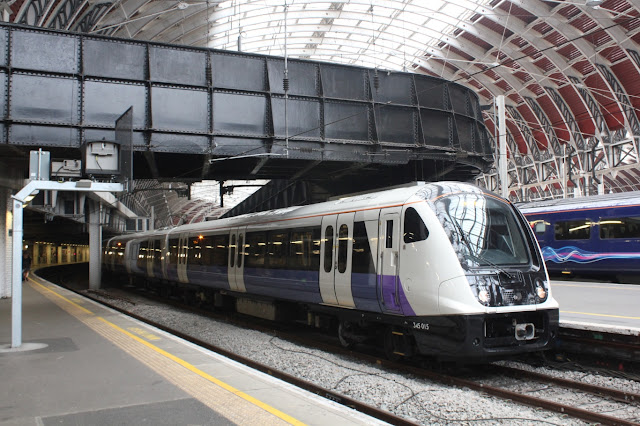

































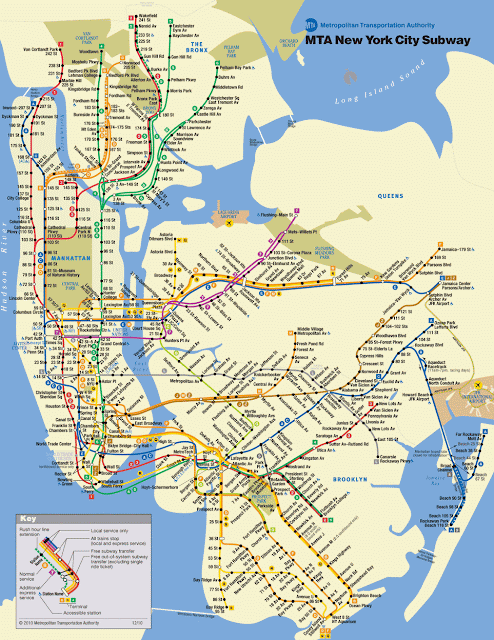

.svg.png)





























































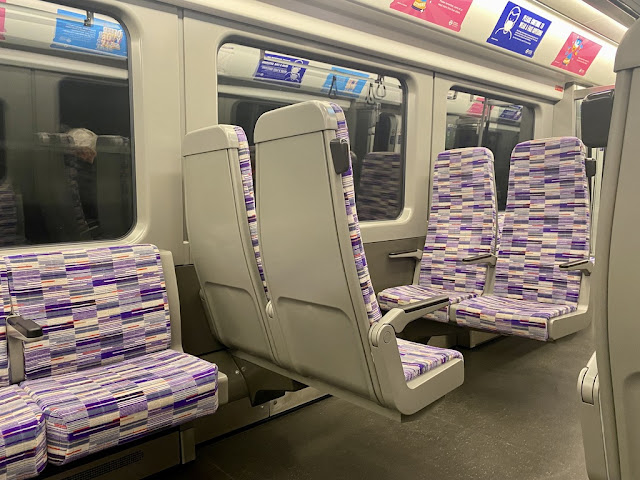















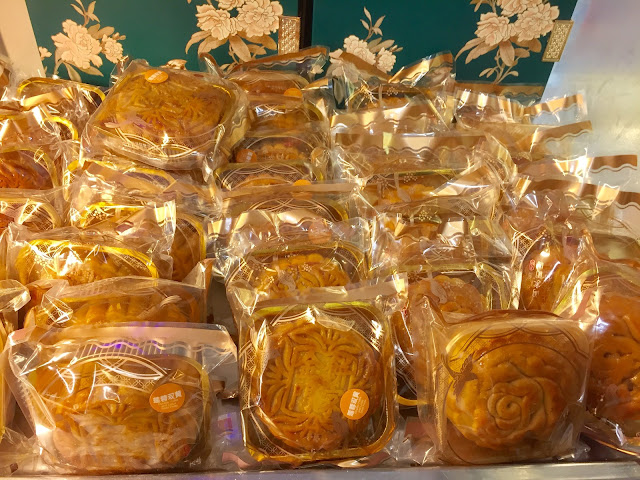
























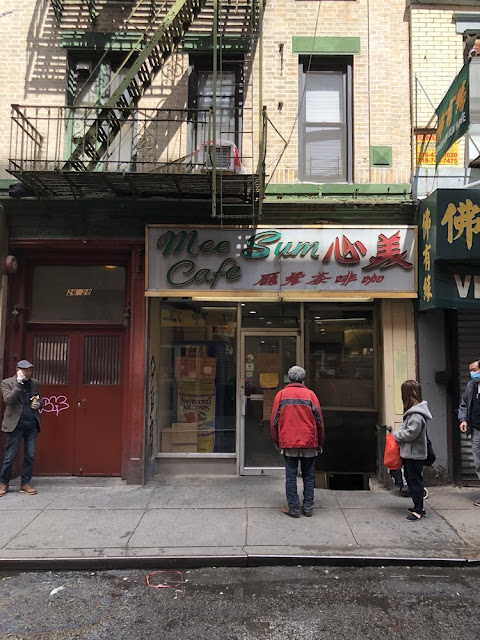
























_(style_of)_-_Robert_Sydney_(1595%E2%80%931677),_2nd_Earl_of_Leicester,_KG,_KB_-_1180911_-_National_Trust.jpg)

























































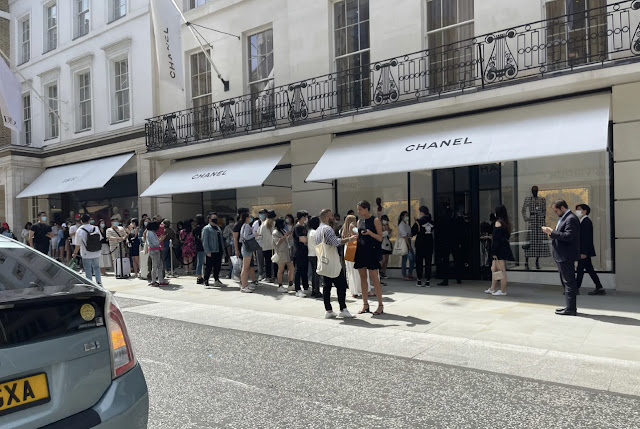







































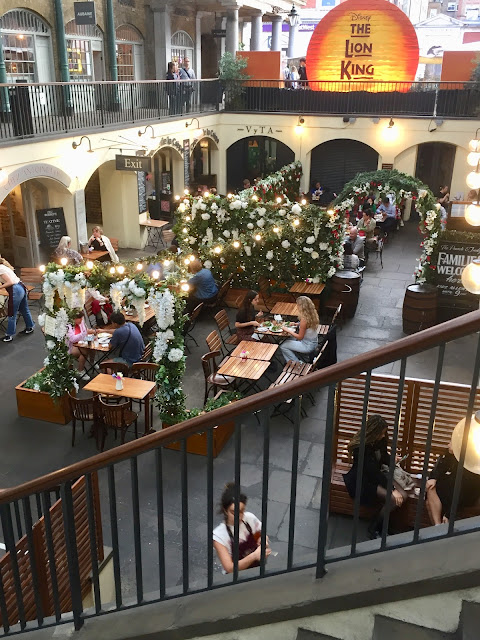






















No comments:
Post a Comment
Don't be shy: leave your comments :)